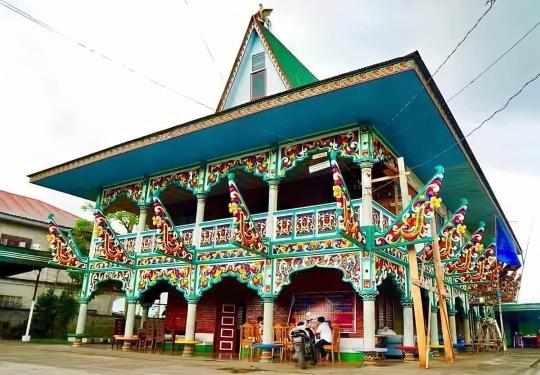#Maranao
Text
AUSTRONESIAN RESOURCES
The Anthropological Masterlist is HERE.
The Austronesian people are an ethnolinguistic group that speak an Austronesian language. These include the people of Maritime Southeast Asia, Southeast Asia, and Polynesia.
BALI ─ “The Balinese people are an Austronesian people. They are native to Bali.”
─ Balinese Language
─ Balinese Traditional Architecture
BICOLANO ─ “The Bicolano people are an Austronesian people. They are native to Bicolandia in the Philippines.”
─ Bicolano Culture
─ Bikol Language
─ Bikol Dictionary
HILIGAYNON ─ “The Hiligaynon, or Ilonggo, people are an Austronesian people. They are native to the Western Visayas in the Philippines.”
─ Hiligaynon Culture
─ Hiligaynon Language
─ Hiligaynon Dictionary
JAVA ─ “The Javanese, or Javan, people are an Austronesian people. They are native to Java island in Indonesia.”
─ Javanese Information
─ Javanese History
MALAGASY ─ “The Malagasy people are an Austronesian people. They are native to Madagascar.”
─ Malagasy Culture & History
─ Malagasy Language
─ Malagasy Dialects
MALAY ─ “The Malay people are an Austronesian people. They are native to the Malay Peninsula, eastern Sumatra, and coastal Borneo.”
─ Malaysian Information
─ Malay Dictionary
MARANAO ─ “The Maranao, or Meranao, people are an Austronesian people. They are native to the island of Mindanao in the Philippines.”
─ Maranao Language
─ Maranao Grammar
─ Maranao Dictionary
MELANESIA ─ “The Melanesians are an Austronesian people that share the Melanesian culture. They are native to Melanesia.”
─ Melanesian Oral Tradition
─ European Cartography of Melanesia
─ Anglican Texts of Melanesia
NAGE ─ “The Nage people are an Austronesian people. They are native to the eastern Indonesian islands of Flores and Timor.”
─ Nage Language
PHILIPPINE ─ “The Filipino people are an Austronesian people that share the Filipino culture. They are native to the Philippines.”
─ Filipino Culture
─ Filipino History
─ Filipino Folktales
SIRAYA ─ “The Siraya people are an Austronesian people. They are native to southwest Taiwan.”
─ Indigenous Taiwanese Languages
THE SOLOMON ISLANDS ─ “The Solomon Islands are a group of Oceanian islands.”
─ The Solomon Islands Information
─ The Solomon Islands Religion
─ The Solomon Islands Language
SUNDA ─ “The Sundanese, or Sunda, people are an Austronesian people. They are native to western Java.”
─ Sundanese Literature
TINGUIAN ─ “The Tinguian, or Itneg, people are an Austronesian people. They are native to northwestern Luzon in the Philippines.”
─ Tinguian Culture
─ Tinguian Religion
#resources#austronesia#bali#bicolano#hiligaynon#java#malagasy#malay#malaysian#maranao#melanesia#nage#philippine#siraya#solomon islands#sunda#tinguian
39 notes
·
View notes
Text

The Masjid Al-Dahab, the Golden Mosque of Manila.
Some of the walls beneath the golden dome are inlaid with colorful patterns inspired by Maranao art.
On the lower right are depictions of fern leaves called pako lungat of Maranao okir or art motifs.
On the left could be inspired by Tausug or Yakan weaves, though I'm not sure. Beautiful nonetheless.
40 notes
·
View notes
Text
Sarimanok
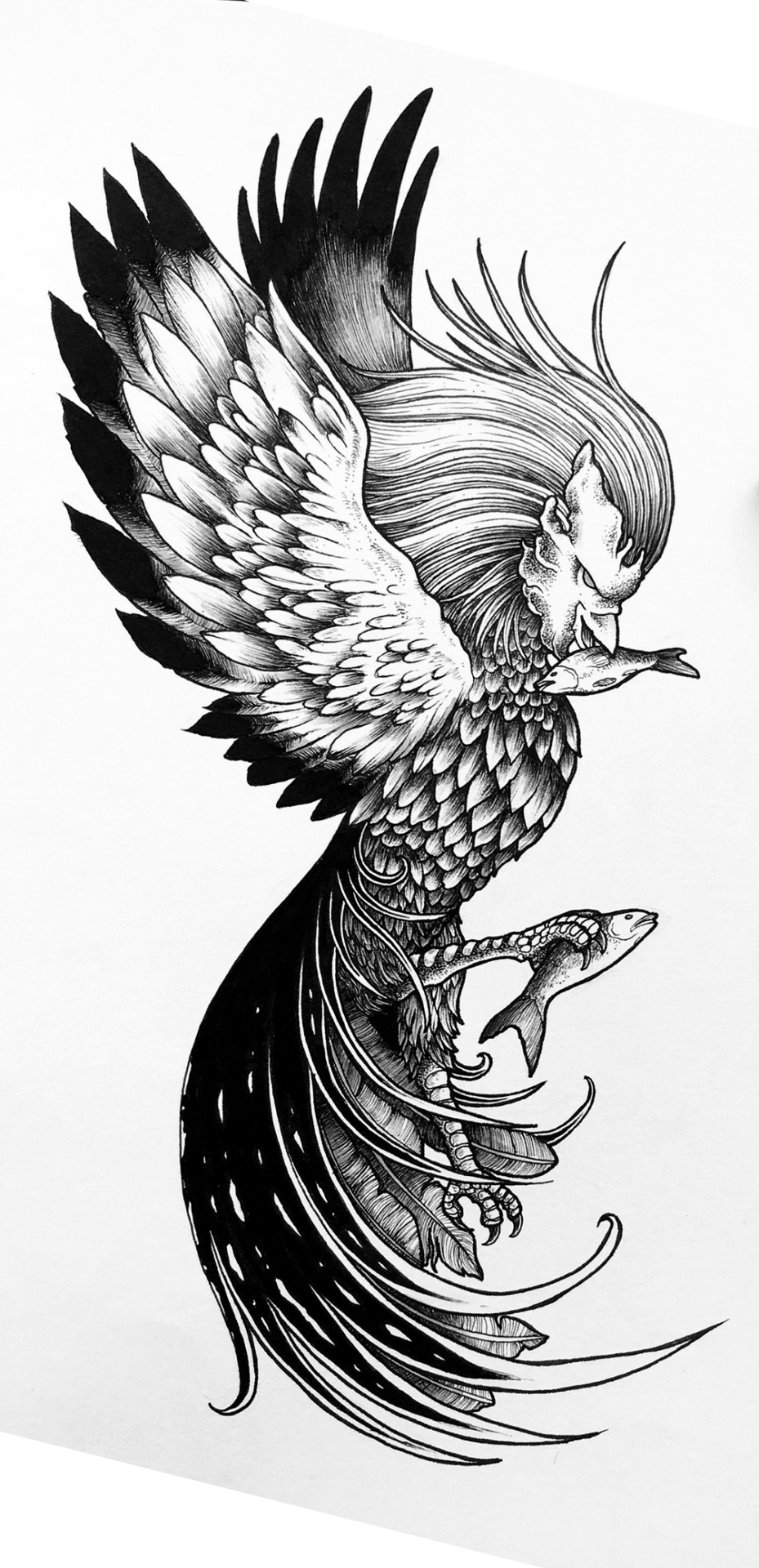
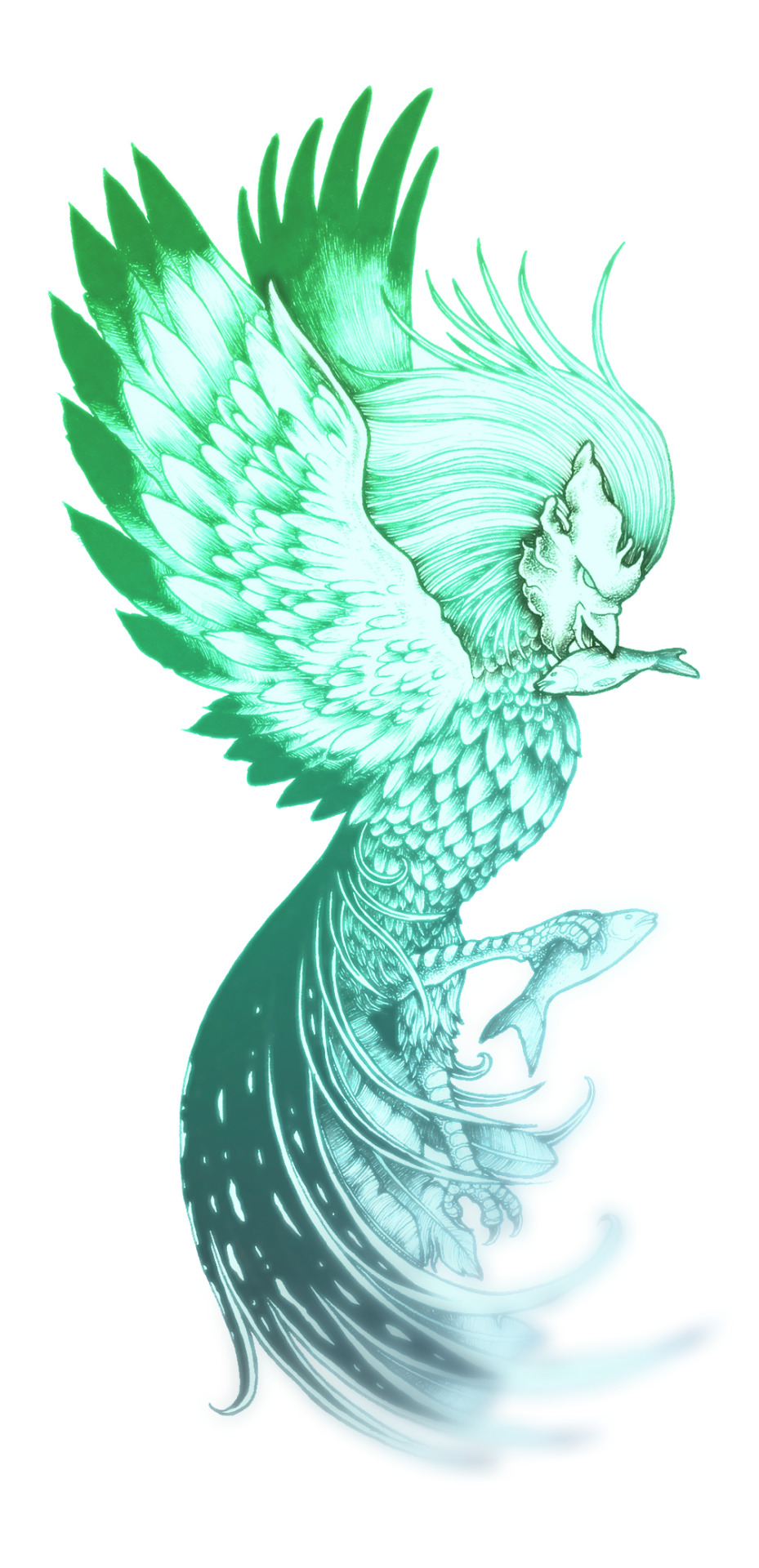
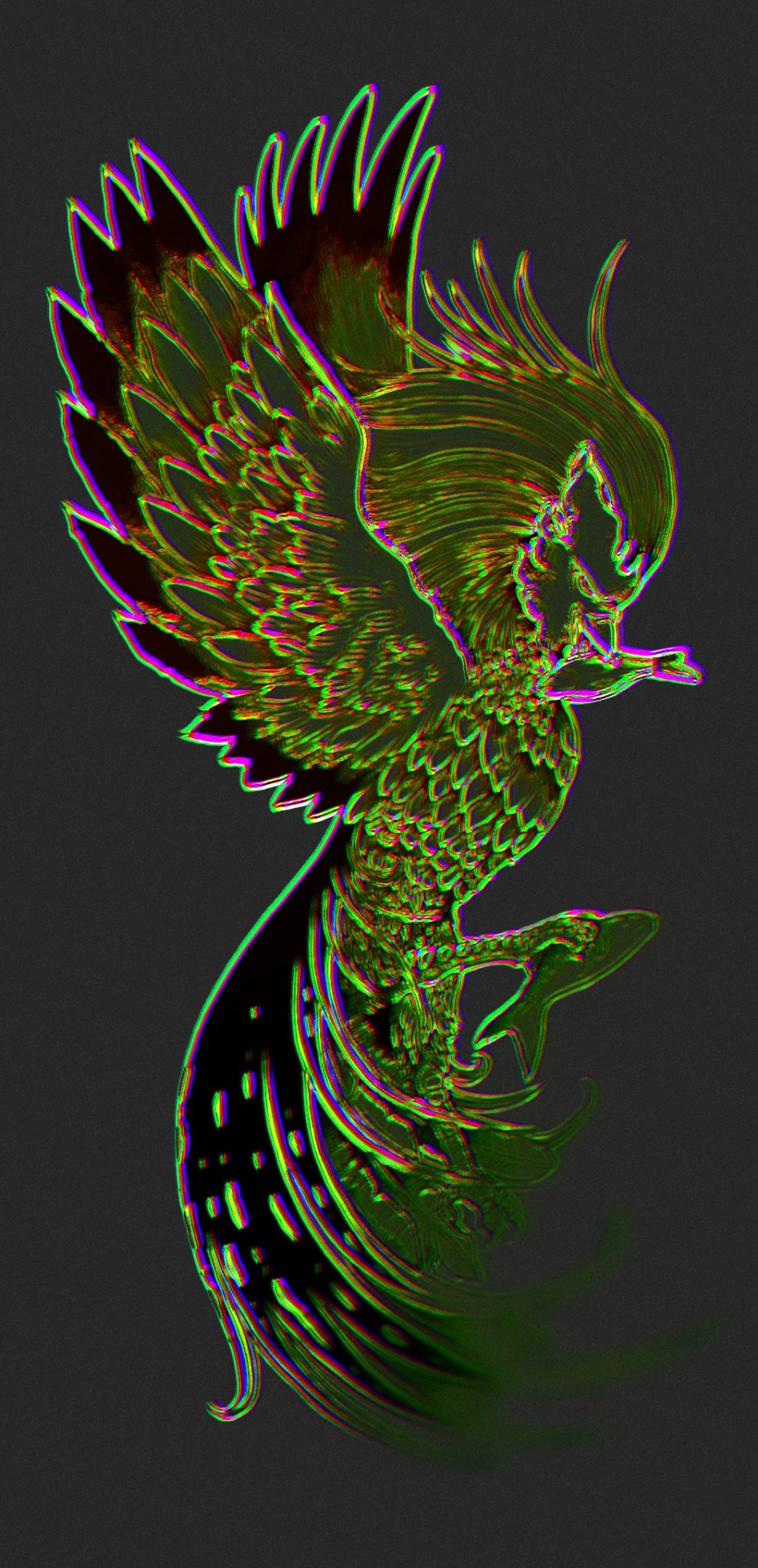

Sarimanok
Description
If there’s a symbol that the Maranao people in the Philippines are associated with, it’s the Sarimanok. Sarimanok is an important part of the Maranao people’s cultural heritage, it is invoked in many rituals and it showcases their unique artistic geniuses.
The Maranao tribe is from the Mindanao island in the southern part of the Philippines and even before the arrival of the Spaniards in the country, they had their own culture, language, beliefs and arts. And the Sarimanok, with its beautiful and colorful feathers, is frequently depicted in their artistic, decorative and architectural designs.
The word Sarimanok comes from “Sari” which means a garment of different colors, and “manok”, which means rooster. The figure of sarimanok is normally characterized by its colorful feathers, scroll, leaf and other motifs on its head, and the fish that it carries on its talons or in its beak.
The origin of the sarimanok is not known, but it is widely featured in numerous legends.
According to one legend, once upon a time, there was a prince named Rajah Indarapatra who fell in love with the moon goddess who came to earth every Friday to bathe in a scented well. The prince knew that they couldn’t be together because the moon goddess was not from this world. He fell into deep despair, then one day while he was carving a rooster made of wood, he challenged it to take him to the moon. The rooster, with beautiful feathers, came alive and flew the prince to the moon to be with his beloved. The prince was never seen again.
Another legend says that the Maranaos, who are predominantly Muslim, believed that when the Prophet Muhammad went to the seven heavens, he found the rooster in the first heaven and it was so large that its crest touches the second heaven. Legend says that the crow wakes up all living creatures except man, and it is believed that Judgement day comes when the rooster stops crowing.
However, there is also a legend that states that the existence of sarimanok started pre-Islamic beliefs. According to the Maranaos, the Sarimanok is their totem bird named Itotoro which has a twin-spirit, Inikadowa. When Rajah Indarpatra married a water nymph, they had two sons: one who can be seen and the other, unseen. Seen became the ancestors of the modern-day Maranao people and Unseen is the spirit that they pay tribute to during rituals and rites. These two brothers made a pact that they will always protect each other from bad spirits and they chose the Sarimanok to be their totem bird and through the help of its twin, Inikadowa, it became the link between the seen and the unseen worlds. The fish on the beak of the Sarimanok symbolises the food that the Maranao people offer to the spirit world.
No matter what the origin was, the Sarimanok is highly revered by the Maranaos and has become an integral part of their culture and widely present in their artistic and architectural designs, rituals, dance and festivals. The Maranaos believe that the Sarimanok will bring them good fortune and if the spirits are pleased, they will have a bountiful harvest. And what started as a cultural heritage from the south of the Philippines has already been adopted by the whole country and nowadays, it has become one of its enduring symbols.
Original art / Original image before it became trippy
Cil Flores Traditional Piece
PS: Btw it really sucks that tumblr doesn’t let people upload gifs with less than 10mb, makes us optimize our gifs and even then it optimizes them even further in theyr servers to 3mb i believe
#Artistic#architectural#design#rituals#philipines#goddess#gods#maranao#heritage#rooster#judgement#muslim#prophet#creatures#legendary#legends#.mythology#myth#folklore#art#artist#fantasy#digitalart#photomanipulation#trippy#macabre#sarimanok#crow#spirit#ancestors
3 notes
·
View notes
Text
“A few years ago, a Mranao friend told me that he just came from Bicol where he stayed for some months. He said that to his surprise, the Bicol language was practically the same as the Mranao language. There are indeed many words that are the same for both languages such as kasili. The quintessential Bicolano term Uragon is also a Maranao word.
A few years ago, I finally solved the riddle. I read an historical book that recounted the Moro Wars in detail. It appeared that for at least a hundred years, the Moros constantly raided Luzon and Visayas. Bicol, being the southernmost tip, was the Moros’ landing point in Luzon. They also made a base in Masbate. In fact, many Moros actually settled in Bicol. This explained the culinary and even linguistic similarities between Bicol and Moro, especially Maranao, culture. During the Moro Wars, the Moro raids against the Spanish settlements in Luzon and Visayas were “multi-national” with contingents from Lanao, Maguindanao, Buayan, Sulu and even from Borneo and Moluccas. Apparently, some Maranaos got quite attached to the charms of Bicolandia.
Some years ago, an elderly officemate told me that when he was a child in Camarines, just before the sun set, the parents used to call the kids to stop playing and come home by yelling “the Moros are coming!” He said they used to be so scared of “the Moros” although they never saw one. That was in the 1940’s. This must have been the long-term effect of the Moro raids in Bicol.
Even the myths of the Bicolanos also point out to Moro influences. The world’s most perfect cone-shaped volcano Mt. Mayon has a story behind it. The volcano is named after Daragang Mayon (Lady Mayon). She had many suitors – Datu Laky, Rajah Malumay, Sultan Karim and Datu Buhawin. Interestingly, they all had Moro titles.”
Excerpt from “Mranaos and Bicolanos” (2007) by Datu Jamal Ashley Yahya Abbas
1 note
·
View note
Text
youtube
1 note
·
View note
Photo

maayong buntag, hilaya ⛅
some homework! we were tasked to reference the work of gustav klimt
#the textile is meant to be malong btwww#produced by mostly maguindanaon maranao and t'boli weavers!#oc#hilaya
2K notes
·
View notes
Photo

Lotoan | Betel nut box. Maranao/ Lanao del Sur, 19th. century. Brass and silver.
Ayala Museum
66 notes
·
View notes
Text

Datoy ti pakabigbigan ni Fahad, nga haan nga maribriba nga arkitekto.
Here lies Farkhad, the most unshakable architect.
#pathologic#pathologic 2#pathologic fanart#мор утопия#farkhad pathologic#farkhad#phathologic#filipino#fanart#digital art#eembulan#with id#2023#filipino pathologic on the art account???... yes#also translating the quote into ilokano was harder than i thought so i got my parents to help me#we translated to tagalog then to ilokano#the hardest part was translating “unshakable” and my dad came up with “maribriba” which is “to crumble”#so “haan nga maribriba” = will not crumble#also changed his name to fahad which is the maranao version of fahd which means “panther”#also the background text is maranao and well... if you do some searching you may find what it means :)))
25 notes
·
View notes
Text

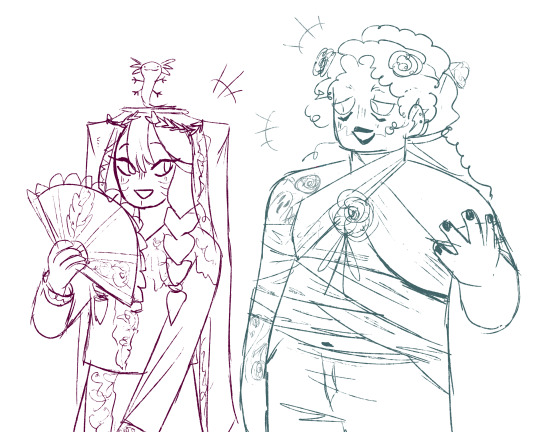
getting back into the swing of things
#mine.art#trafficshipping#c mumbo#c martyn#c lizzie#c cleo#ahasbands#uhh cleo and lizzie can be seen as ship too if yall want#whats their shipname even???#i mean if we go by my standards theyd be called#shadowrose#but like idk lol#anyways uhhh so while making mumbo's spirit clothes i wanted to base him off the bleeding heart dove cause well yanno the whole grian thing#and apparently its from luzon which is pretty cool but was very much not intentional on my part#so i went yknow what im gonna design someone off something from mindanao#so i went with singkil for lizzie#uhh for non filipinos 'singkil clothes' are actually maranao clothes so pls dont call them singkil costumes lol thanks#i actually wanted to design her outfit based on the umbrella bearer (queen's/princess' first maid) cause i lowkey like it better#but hey she's a queen so queen's clothes it is#also was planning to have cleo do the whole umbrella bearer thing but it doesnt really fit into their relationship lol#it does fit ren tho so maybe i'll draw that#uhh just realized i forgot lizzie's wings#i am a sham#i'll figure it out ig#Siren of The End AU
30 notes
·
View notes
Text
The Maranao Culture and Tradition
DMITRI ETHAN C. BELANDRES, B. S. PHAMACY 1-A
@evienovich / evienovich.tumblr.com
If there is one tribe that can arouse your interest, try discovering the Maranao Tribe, a Muslim Tribe that adheres to Islam Belief. The Maranaos are known to inhabit most of the municipalities of the province of Lanao del Sur and Marawi City, its capital. Visit and see for yourself how the culture and tradition of the Maranaos stay compact, and amazingly resilient against outside influences.
One of the Islamic Muslim Tribes in the Philippines which has sustained its culture and tradition even in the modern days is the Maranao Tribe. The term Maranao literally means “People of the Lake,” with reference to the location of the Tribe’s habitat immediately contiguous to Lake Lanao, south of Marawi City, in the province of Lanao del Sur, and one of the Bangsamoro Regions.
The Maranaos, as they are called, have their own spectacular culture and tradition peculiar to them which make them stand out from other Muslim Tribes. They are known for their metal crafts, architecture, colorful dances, cultural attire, tapestry, distinctive cuisine, and epic literature.
One of the most popular art manifests of the Maranaos is their vivid color combinations. This taste of art that displays bright, eye-catching colors attracts not only the locals but even foreign visitors who came to know their art. This eye-catching color combination taste which they integrate with their other forms of artistry, is truly amazing and captivating.
Among the most distinct and an essential trademark of the Maranaos’ art forms is the Sarimanok. The Sarimanok is a legendary bird that serves as the symbol of the Maranaos. Sarimanok came from the words “sari” (a garment of different colors deeply related to their culture) and “manok” (rooster with its beautiful and colorful feathers), believed to represent good fortune and prosperity, a symbol that the Maranao people in the Philipines are associated with, and a significant part of Maranao people’s cultural heritage.
SARIMANOK
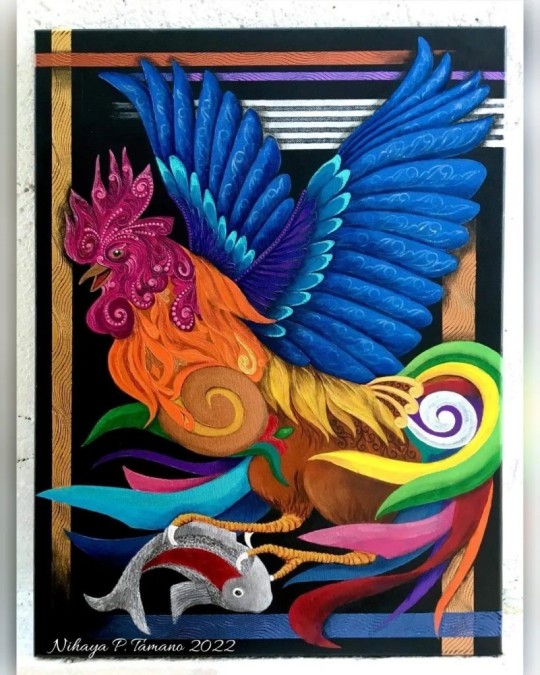
CULTURAL DANCES
Another art form of the Maranaos which also made an impression in their distinct culture and tradition are their dances. The cultural dances also showcase the Maranao’s ingenuity. Performing these dances highlight certain celebrations such as during festivals and occasions intended for entertainment. Their trademark prevails in the use of ornate colorful costumes and instrumental music. Their dances were created from the Darangen, an ancient epic of the Maranao community.
One of their famous dances include the Kappa malong-malong which is also known as Sambi sa Malong. This is a cultural dance where dancers show the several ways of using malong. It portrays how malong is worn with the fabric combined of many bright colors, an identity of the Maranaos’ taste of colors. The meaning of the dance lies in the aim of partaking the usefulness of malong that to fully absorb the steps of this dance, one must learn and understand the significance of malong – a simple tubular yet highly functional piece of cloth for all Filipino-Muslim.
KAPPA MALONG-MALONG

Another popular dance is the Singkil, a royal dance where the woman gently steps in and out of the clipping bamboos while holding a fan. The woman dancer wears an elegant colorful costume as the main dancer. Its music is by the sound of a gong, an original sound intended for the dance. This dance is one of the proofs of Maranao’s original dances which identifies them from other tribes, a true Maranao pride.
SINGKIL

Along with the art forms like the Sarimanok and the dances reflective of the Maranao culture and tradition is the Torogan which literally means a resting or sleeping place. It is a traditional ancestral house symbolizing a high social status or nobility among Maranao People. This pre-colonial house was home of the royal blood whose positions in the community were that of sultans or datus deemed political leaders looked up with great respect by their respective constituents.
The Torogan portrays the ingenuous architectural prowess of the Maranaos. One of the last standing Torogan and the only remaining habitable structure was declared as a National Cultural Treasure by the National Museum of the Philippines in 2008 which can be found in Bubung Malanding, Marantao, Lanao del Sur. This structure was built without the use of nails only fitted joints and fiber lashings.
It is one of the attractions and pride of the Maranao Tribe as it reminds them of the historic deed of their brave leaders who withstood Spanish conquest. The Torogan symbolized rank, power and prestige.
TOROGAN
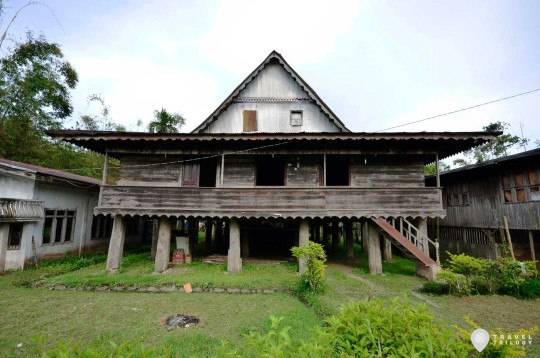
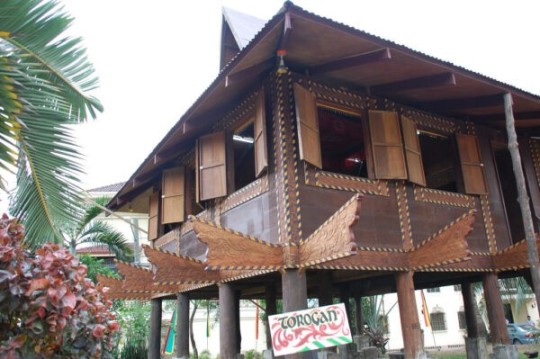
Torogans were elevated from the ground using “tukod” or hard tree trunks of huge girths. At the center is the “tapuwilih” post surrounded by twenty-five others at the base.

Another part of the culture and tradition of the Maranaos is their distinct taste of food. They have a different choice of food and preparation. Travelers from neighboring provinces and students of the Mindanao State University (MSU) have been privileged to taste the delicacies peculiar to Maranao Tribe. Their famous cultural delicacies include the sakurab. It’s made with palapa (dried coconut shavings and dried chili), local native scallions and chili, a common appetizer for the Maranaos.
Known for love of spicy flavors, most of their food are indeed hot and spicy. The palapa also serves as a mainstream ingredient in most of their popular dishes like pyaparana manok (chicken with coconut meat), beef randeng (beef with coconut), bakas (tuna fish), and badak (jackfruit) with coconut milk and powdered turmeric [kalawag], which adds a yellowish color that sets their food apart food from other Muslim Mindanao cuisines.
During their month-long celebration, Maranao’s special ‘kakanin’ delicacies also highlight the event, most of which are made from sticky rice flour with coconut milk and brown sugar such as dudol, tamokansi, tiyatag, pabrot, and many more.
MARANAO CUISINE
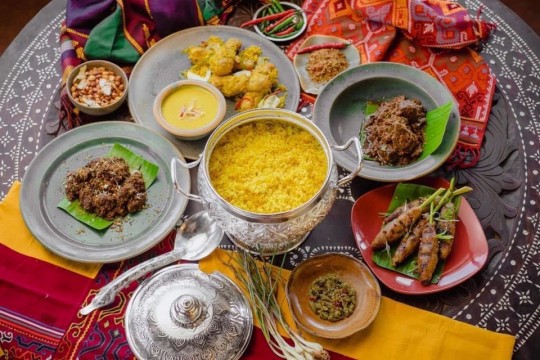
The traditional clothing of the Maranaos goes with their art form display of colorful, handwoven clothes. A known conservative tribe, women wear tightfitting short blouses and narrow cut pants resembling breeches and a wrap-around material to make certain that their bodies are fully covered. Men on the other hand, also wear narrow cut pants and wraps a sash-like cloth around the waist where he places his weapon – usually a long knife.
MARANAO CLOTHING

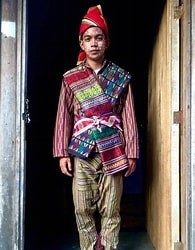




The traditional clothing of the Maranaos goes with their art form display of colorful, handwoven clothes. A known conservative tribe, women wear tightfitting short blouses and narrow cut pants resembling breeches and a wrap-around material to make certain that their bodies are fully covered. Men on the other hand, also wear narrow cut pants and wraps a sash-like cloth around the waist where he places his weapon – usually a long knife.
Start satisfying your curiosity and witness in reality this one Tribe that exhibits a distinguished way of life. It is worth knowing that a certain tribe has been able to preserve its culture and tradition despite the changes of times. It is an overwhelming experience to actually see these people’s unique culture and tradition and truly inspiring to note how they sustain such amazing culture and tradition. This is what makes the Maranao culture and tradition impressive and worth discovering.
0 notes
Text
First-Ever Archaeological Survey Sheds Light on Lanao del Sur's Rich History
via Business Mirror, 04 September 2023: First archaeological survey in Lanao del Sur uncovers ancient Chinese jar, trade links with Maranao, and rich historical narrative.
via Business Mirror, 04 September 2023: Archaeologists conducted a 6-day surface exploration and mapping in Lanao del Sur, unearthing an old Chinese jar and over 200 artifacts, revealing trade connections between Chinese and Maranao in the pre-Islamic period, shedding light on the region’s rich historical narrative.
The survey by the BCPCH-LDS was collaborated with the Provincial Tourism Office…

View On WordPress
0 notes
Text
thoughts and rambling. I don't give out advice on how to write xyz bc I'm not really a professional. And also when I see threads spreading online abt how to write xyz poc. And they're often. Eh? not really right. *even if the person writing them belongs to the same marginalization*- Also often Generalizing- like for example, I once saw a thread on "how to write Muslims" with tens of thousands of notes- and one of the points listed was "stop drawing Muslim characters wearing gold / the color purple"- which is immediately. Like. Dismissive of the entirety of maritime southeast asia (the biggest Muslim populations in the entire world are southeast asian demographics.)- purple happens to be an important color of Tausug and Maranao embroidery- Muslim indigenous peoples of the southern Philippines.

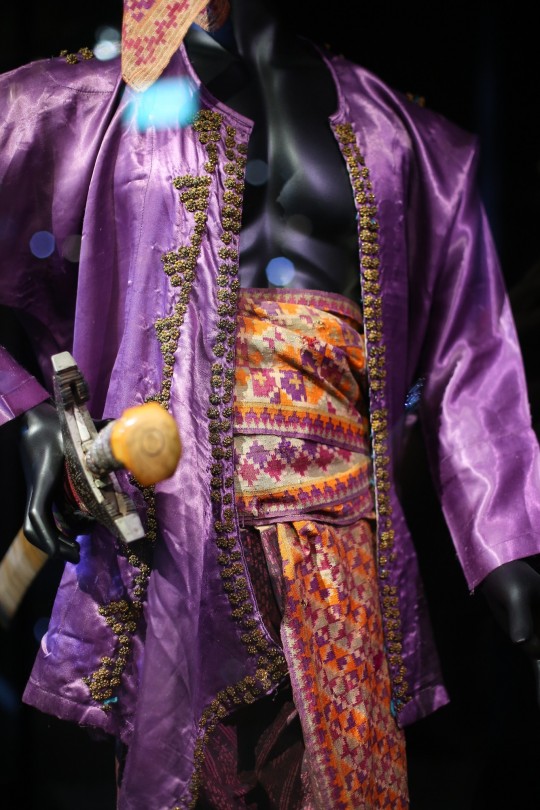

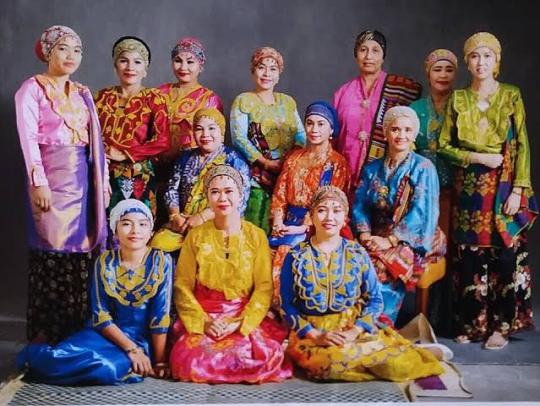
another example off of the top of my head- when people say that "all Chinese people have monosyllabic surnames".. again that's not true for so many Chinese diasporas and ethnic minorities- my great grandparents- were Chinese, and their last names were Cojuangco and Angco- many Hokkien-speaking Chinese folks living in southeast asia have non-monosyllabic surnames- especially if they settled before colonialism- in the Philippines, many chinese surnames are like- Limuangco, Lacson, Yuchengco, Siongco..
No good idea how to close this rant. All I know is that I've lived for so long, it's hard to see people as terrible and purposefully insensitive over the slightest faux pas over mistakes- mainly because the people who feel authoritative over writing poc- also aren't equipped to be writing threads that become extremely widespread online and often spread the wrong ideas. Feels cliche to say, but everybody makes mistakes haha. I'm free to give.. um. Suggestions. but absolutely no word of god in this household.
278 notes
·
View notes
Text
“Our torogan was first built some 260 years ago with the founding of the agama (community) of Dayawan and the installation of the first Sultan of Dayawan. The prestige of this royal house has grown beyond the boundaries of the community. Together with the royal houses of Marawi, Marantao, Guimba, and Madaya, Dayawan is a “keeper” of the House of Lanao. This means that the Sultan of Lanao must belong to the major descent lines of these communities.
Members of this historical royal house led the defense of Marawi against the Spanish in 1891 and 1895. During the American Occupation, Dayawan was very active. In 1935, it was one of the royal houses that hosted the signing of the so-called Dansalan or Marawi Declaration, which was submitted to the US Congress and President. In this declaration, the Maranao datus expressed their desire to maintain independence from Manila. The datus declared that they would rather ‘drown in the lake’ than allow Lanao (and the rest of Mindanao) to be included in the coming Philippine statehood.”
Excerpt from “Torogan, the Mranao royal house” by Jamal Ashley Abbas (August 10, 2018)
#philippines#statehood#southeast asia#mindanao#maranao#nation-building#barmm#sovereign nation#sovereignty#x
0 notes
Text

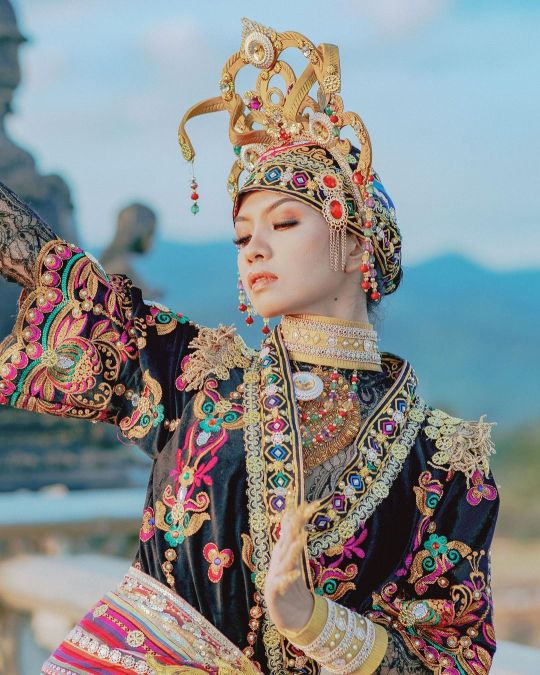

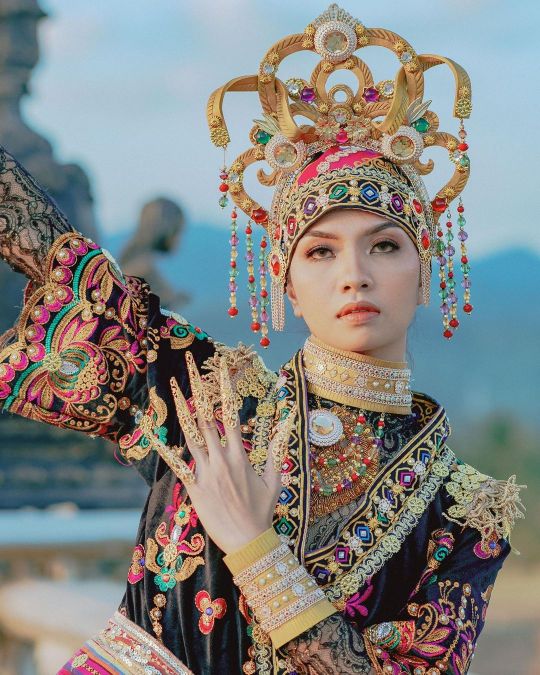
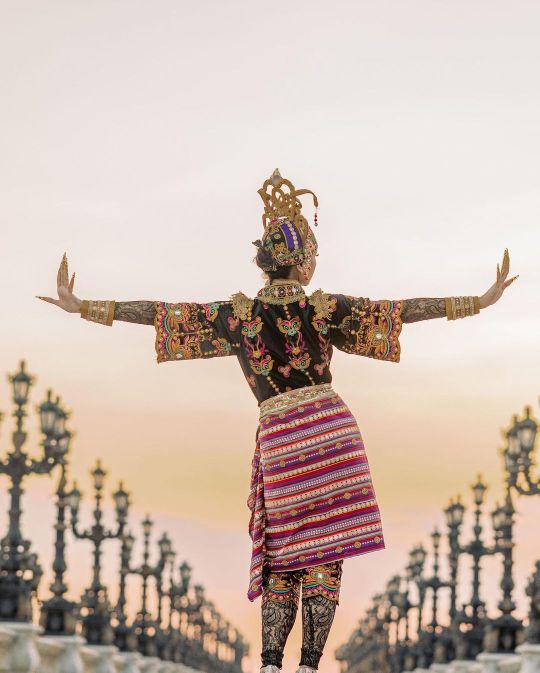
Binibining Pilipina Morong, Bataan 2023 Regional Costume
This is called a "badju", a dress worn by prominent Muslim women of Mindanao. Her costume has a back dress of a Mindanaoan structure which uses Maranao architecture and designs. The costume is very colorful which is very typical of a Muslim Mindanaoan outfit but accented with gold which symbolizes royalty and wealth according to their culture.
115 notes
·
View notes
